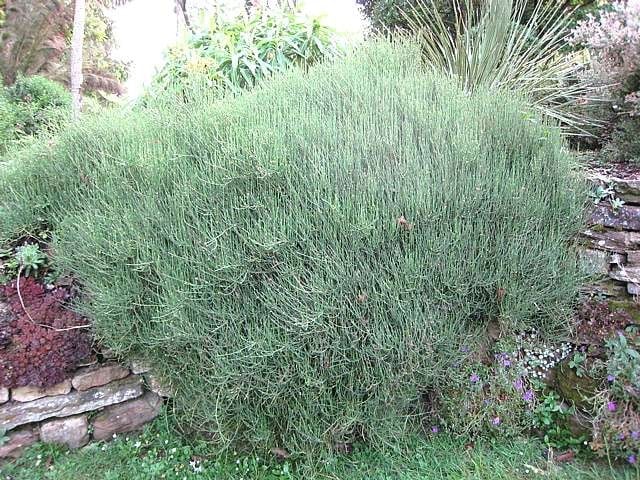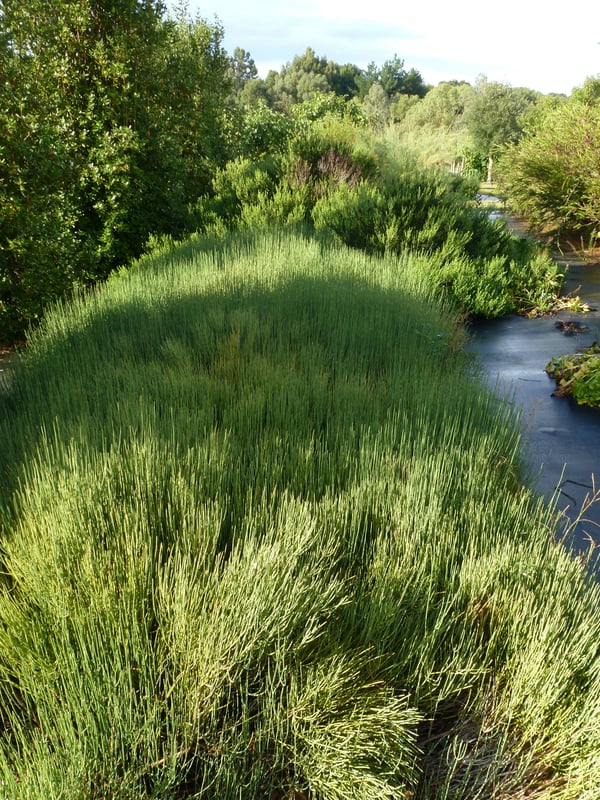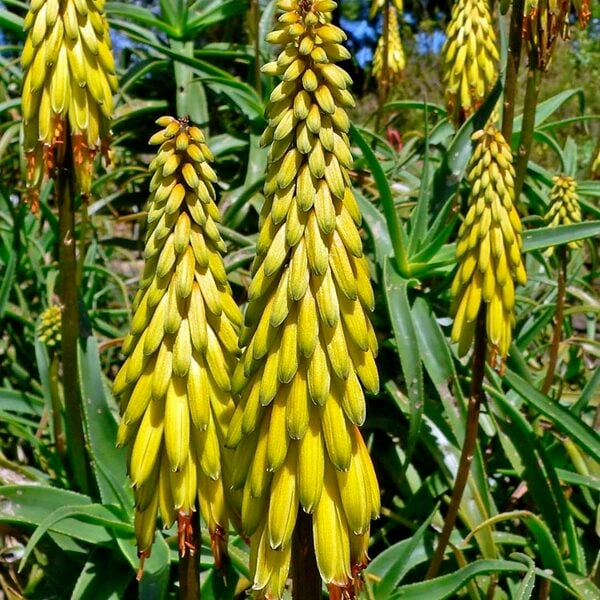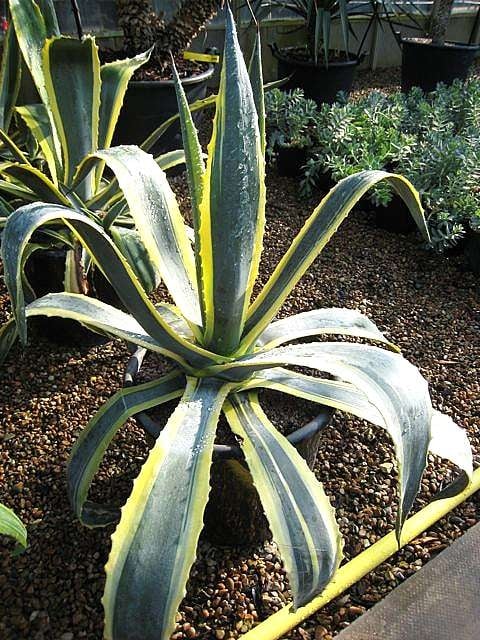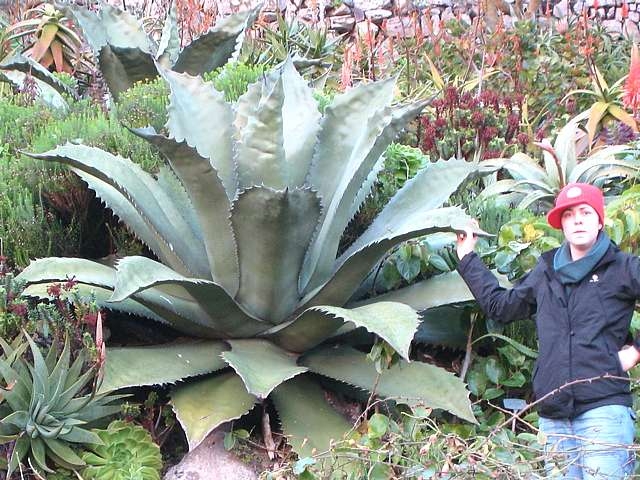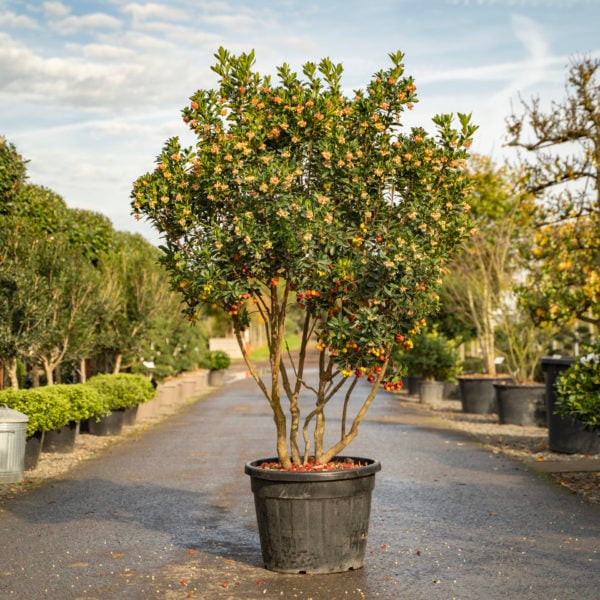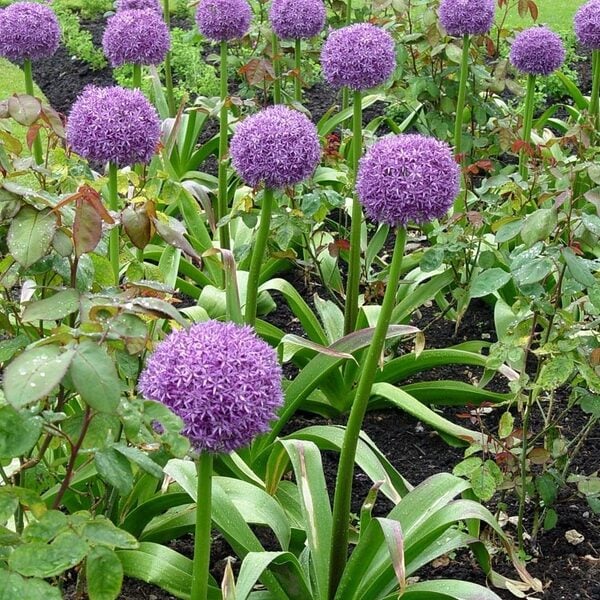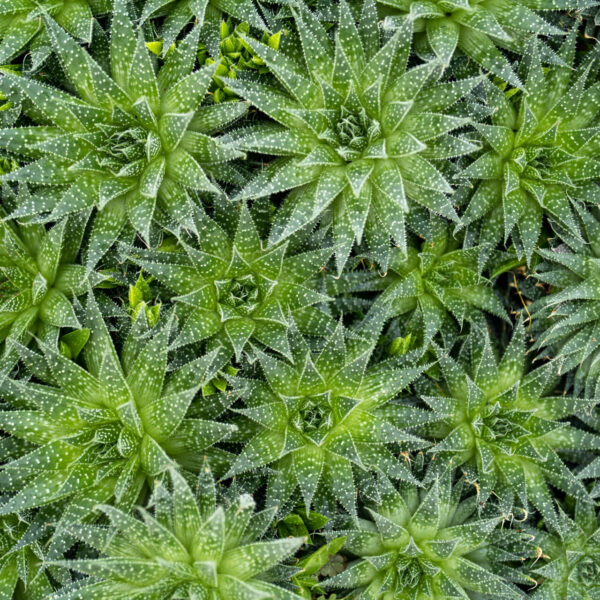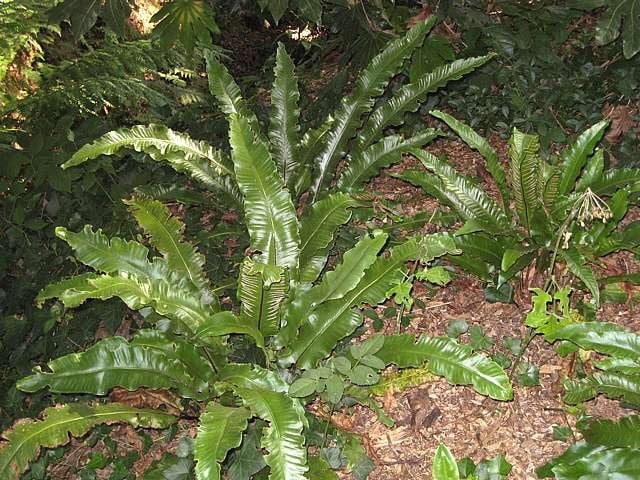Ephedra sp. (Mormon's Tea)
Low with an undulating, hedgehoggy texture. Visit Cambridge Botanic garden for full appreciation and brew it up for an ephedrine charged hallucinogenic experience. 1ft tall. Please contact us for stock availability and sizes.

Hardiness level Green
Mormon's Tea. God knows what it does to Mormons but it's where ephedrine comes from and ephedrine seems to be used for anything from controlling blood pressure to synthesising illegal pharmaceuticals in Russia.
We have yet to experiment with its medical properties. For now we're content to admire it in the garden. They all have a somewhat hairy aspect - all the shoots grow perpendicularly and this leads to a soft texture especially as its natural habit is to gently undulate as it spreads. It fails to do itself justice in a pot where it sulks. Get it in the ground and it's transformed. It only grows to about 1.5ft tall but can spread to 4ft across after 5 to 10 years. The flowers are cream and insignificant.
It's a very particular and unusual sort of thing but when in the right place (a sea side or a prairie type of garden), is superb.
We found the original plant at Borde Hill Garden in West Sussex where it climbed up a wall. Because the shoots are always perpendicular, it had the curious effect of looking like it started at the top of the wall and 'poured ' down the wall. Very fetching but to this day we've never identified what species it is. It was this wonderful waterfall look that took our fancy, not the name. I remember that it was a very rough wall with masses of hand holds. Might not work on a brick wall.
There are many reasons to visit the Cambridge Botanic Garden, not least of which is their amazing collection of ephedras. They're everywhere.
Propagated by us from cuttings from the original at Borde Hill in 1988.
P.S. 'sp.' after the name is a botanic abbreviation for 'species' used when the species is unknown. A botanical cop out.
Additional Information |
|
|---|---|
| Soil Type | |
| Light | |
| Plant Type | Big Leaves / Exotics, Evergreen, Ground Cover, Grown by Us, Shrubs |
| Continent of Origin | |
| Specialist Plants | |
| Features | |
| Situation | Coastal, Exposed (To wind and sun), Mild City Gardens, Plants for Pots, Seaside, Sheltered Garden |
| Hardiness | |




